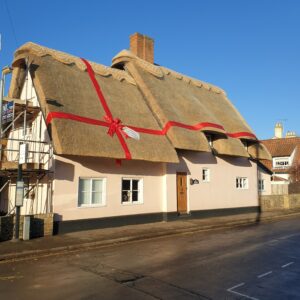Thatched roofs have been around for centuries and are a beautiful and traditional roofing option for many homes. However, one of the main concerns with thatched roofs is their ability to withstand rain and other forms of water damage. Luckily, there are many steps you can take to make your thatched roof waterproof and protect it from the elements.
Choose The Right Thatching Material
The first step to making your thatched roof waterproof is to choose the right thatching material. While traditional materials like straw and reed are popular options, they may not be the most waterproof. Instead, consider using materials like water reed or Cape reed that are known for their water-resistant properties. These materials are also resistant to rot and insect damage, making them a great long-term investment.
Apply a Water-Resistant Coating
One of the easiest and most effective ways to make your thatched roof waterproof is to apply a water-resistant coating. There are many different coatings on the market, but you want to choose one that is specifically designed for thatched roofs. These coatings are usually made from natural materials like linseed oil, and they can help repel water and protect your thatch from the elements. It’s important to apply the coating properly and follow the manufacturer’s instructions to ensure maximum effectiveness.
Ensure Proper Roof Pitch
The pitch, or angle, of your roof can also impact its ability to resist water. Thatched roofs should have a pitch of at least 45 degrees to ensure that water can run off the roof quickly and efficiently. If the pitch is too low, water may pool and seep into the thatch, leading to water damage and leaks. If you’re building a new thatched roof, make sure to work with a skilled thatcher who can ensure that the pitch is appropriate.
Use Underlay
Another option for making your thatched roof waterproof is to use underlay. This involves placing a layer of water-resistant material underneath the thatch to provide an extra layer of protection against the elements. Underlay can be made from a variety of materials, including plastic, felt, and rubber, and can help to prevent water from seeping through the thatch and into your home. It’s important to use the right type of underlay for your roof and to ensure that it’s installed properly to avoid any potential issues.
Maintain Your Roof
Regular maintenance is key to ensuring that your thatched roof remains waterproof. This includes things like clearing debris from the roof, inspecting the thatch for damage, and repairing any areas that may have been impacted by water. It’s important to work with a skilled thatcher who can identify any potential issues and provide the necessary repairs to keep your roof in good condition.
Install Gutters and Downspouts
Gutters and downspouts are essential for directing rainwater away from your home and your thatched roof. Without them, water can pool and cause damage to your roof, leading to leaks and water damage. Make sure to have gutters and downspouts installed around the perimeter of your roof to collect and direct rainwater away from the house.


